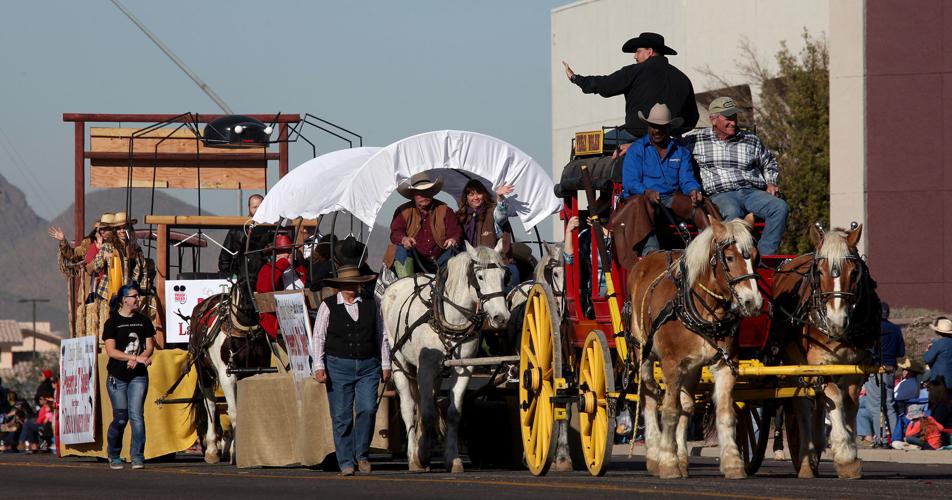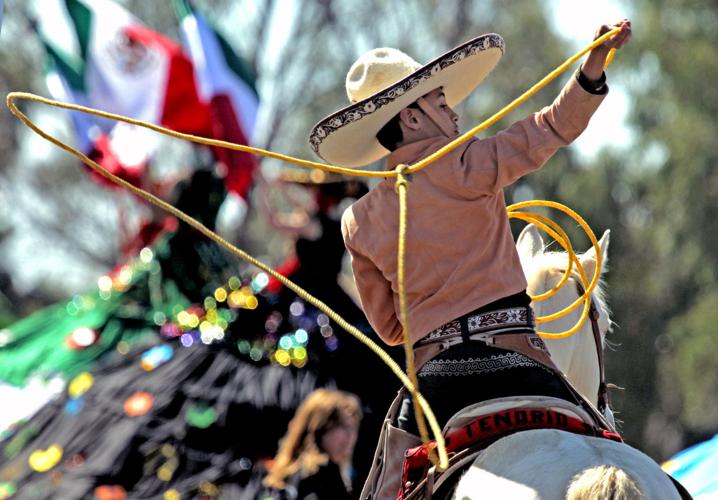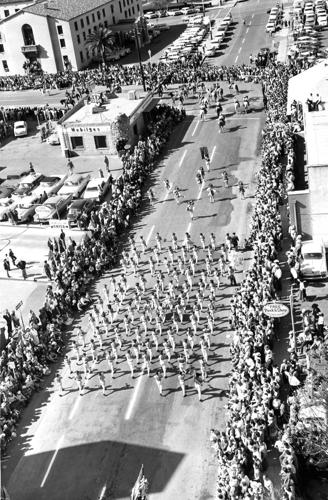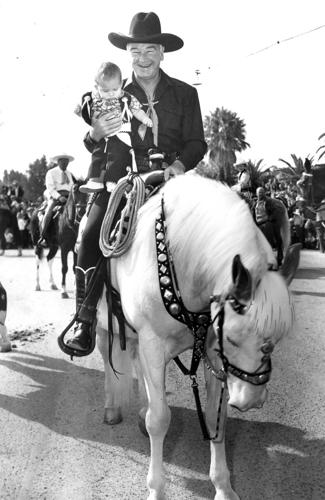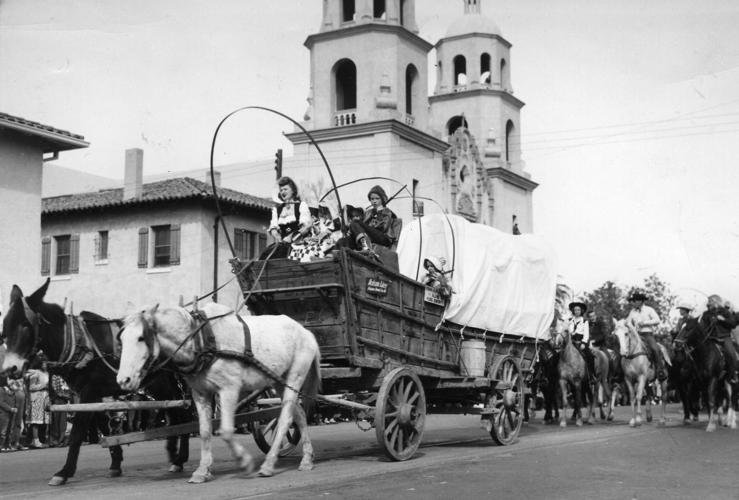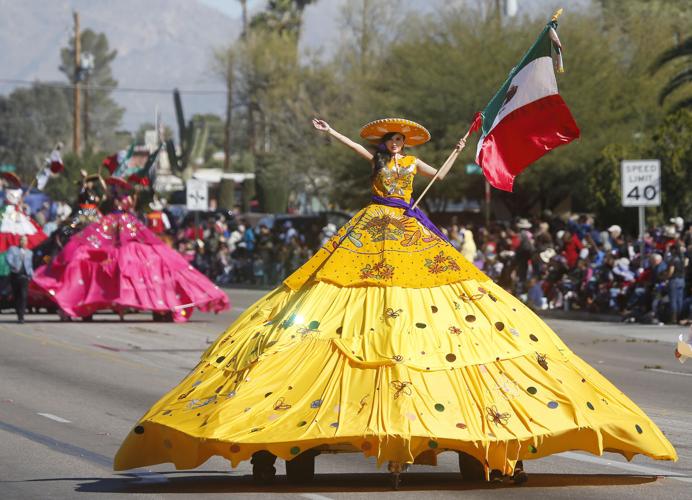It isn’t easy corralling 2,200 people, 650 horses and 128 float entries over roughly two miles of busy south-side streets. But that’s exactly what the Tucson Rodeo Parade Committee will do for the upcoming rodeo parade next Thursday, Feb. 23.
The task isn’t as daunting as it could be: The committee has had lots of experience — 92 years, to be exact.
A bit of background
When the rodeo started in 1925, organizers felt a parade was needed to kick off the event.
The first parade wended its way through narrow downtown streets and included 650 entries; most were prancing horses with single riders.
In 1991 the parade moved to its present route on Tucson’s south side for safety considerations, according to folklorist and historian Jim Griffith.
Not the biggest
in the world, but ...
While the parade started in 1925, it was not de-mechanized until 1940. Organizers started touting the 2-mile-long rodeo parade as the largest nonmotorized parade in the world.
But in 2010, Herb Wagner, a parade spokesman, fessed up that that may be an exaggeration:
The parade accompanying the Sri Lanka festival Esala Perahera — held annually in July and August — is the world’s largest and longest-running nonmechanized procession, coming in at about five miles. It features dancers, fire jugglers and more than 100 elephants dressed in fairy lights and silk.
The Tucson parade may not be the largest nonmotorized parade in the world, but it is the largest in the nation. Even without the elephants, that’s impressive.
Get smart
Despite the vibes of the Old West, the parade now offers a smartphone application. To better keep up with the festivities, the app provides detailed information about the route, participants, tickets, parking, nearby businesses, bathroom locations, and first aid stations.
The free app, called Tucson Rodeo Parade in the app store, is available through Apple and Google Play.
Wagon ho!
If you’ve ever paid a visit to the Tucson Rodeo Parade Museum, you’ve seen the many wagons on display. The parade committee has a collection of more than 200 antique wagons. This year, 59 have been rented out to parade entrants. For safety reasons, they come with wagon masters and their horses.
“The most common piece that people rent from us is the hay wagon,” says Bob Stewart, the parade committee’s chairman. “It’s big and not particularly beautiful until it gets decorated.”
A day before the parade, the parade committee hosts a decorating party to encourage participants to gussy up their floats.
“We encourage decoration to make the parade more colorful,” says Wagner, now the parade committee’s chairman of entries and lineup. “Fry’s Food & Drug has a storefront built on their wagon. Truly Nolen has a wagon with a big bug built on it.
“The ideas these people come up with are fantastic. They’re keeping western heritage alive.”
And participants don’t ride just to wave along the route. “The entrants compete for different prizes,” Stewart says. “Everybody tries to out-do everybody. It’s fun to watch; it creates a good atmosphere. The parade is a tradition I hope never ends.”
An open door
Applications for parade participants began in November and closed in mid-January.
“We’ve got a whole plethora of people who join the parade — families, Western riding groups, schools, civic organizations, and some businesses,” Wagner says.
“We end up with a great parade when we’re all done. We very rarely reject anyone in the applications.” If there are rejections, it’s because the float fails to comply with parade rules.
Marching along
Groups and individuals plan for weeks to join the parade, though the flurry of float-decorating usually happens a day or two before.
It can be low-key, such as the Tucson Electric Power float — for years the company sponsored floats for local nonprofits and let them decorate and occupy it. But this year, TEP’s 125th anniversary, the utility company will deck out the wagon and fill it with its own employees.
“Our process for planning the entry comes from the parade’s Western legacy,” Wendy Erica Werden, TEP’s manager of community investment and philanthropy, said in an email.
“The Western style will be accented with an electrical theme and TEP colors — electric blue and gold.”
This year marks the 49th that the League of Mexican-American Women have participated in the parade.
Four florecitas, girls ready to celebrate their quinceañera, dress in princess-like gowns and occupy the league’s wagon entry. In the past, the float has been covered with more than 700 handcrafted tissue-paper flowers in vibrant colors. “We might have even more flowers this year,” says Clara Sandoval, a member of the league’s board of directors. “A lot goes into the making of the float. … It’s very exciting to be in this historic parade. It’s part of our culture.”
Good sight lines
The crowd is spread out and much bigger than it looks. Stewart says 150,000 to 175,000 spectators sit along the parade route. Some people mark their place two days in advance.
“They have trucks parked early so no one else can take their viewing spot, which is cool,” Stewart says.
For the best sight lines, an early arrival to the parade might be a good idea.


